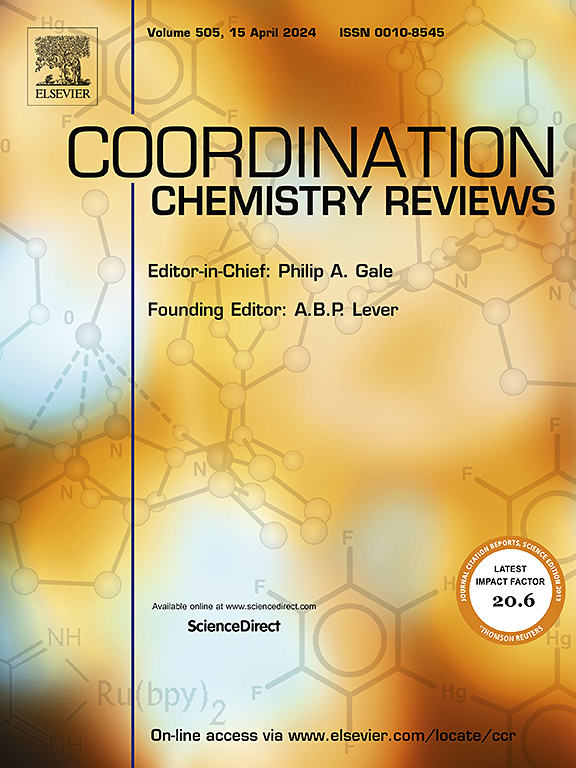Recent advances in metal-organic frameworks (MOFs)-based colorimetric sensors for visual detection of food freshness
IF 20.3
1区 化学
Q1 CHEMISTRY, INORGANIC & NUCLEAR
引用次数: 0
Abstract
Harmful substances, such as volatile organic amines and biogenic amines released during food spoilage, pose a significant threat to food quality and safety and directly impact consumer health and well-being. Therefore, the exploration and development of efficient and reliable detection technologies for food freshness have become a crucial component in safeguarding public health and maintaining market order. Metal-organic frameworks (MOFs) are a new generation of crystalline porous materials characterized by their hole-like structures, formed through coordination bonds between metal ions or clusters and organic ligands. Due to their exceptional sensitivity, intuitive visual effects, user-friendly operation, and cost-effectiveness, MOFs-based colorimetric sensors have sparked significant advancements in visual detection of food freshness. This article systematically reviews the latest advancements in visual colorimetric sensors based on MOFs for monitoring food freshness. It provides a comprehensive analysis of their capabilities and application potential in identifying and quantifying indicators of food spoilage. Moreover, this review objectively discusses the challenges currently faced by MOFs-based visual colorimetric sensing assays, including material stability, environmental adaptability, and the scalability of practical applications. It also explores the future development pathways and vast prospects of this technology. Based on existing findings, the review provides a critical perspective for understanding the current application status of visual colorimetric sensors in monitoring food freshness, with the aim of offering insights for its future applications and research and development.


求助全文
约1分钟内获得全文
求助全文
来源期刊

Coordination Chemistry Reviews
化学-无机化学与核化学
CiteScore
34.30
自引率
5.30%
发文量
457
审稿时长
54 days
期刊介绍:
Coordination Chemistry Reviews offers rapid publication of review articles on current and significant topics in coordination chemistry, encompassing organometallic, supramolecular, theoretical, and bioinorganic chemistry. It also covers catalysis, materials chemistry, and metal-organic frameworks from a coordination chemistry perspective. Reviews summarize recent developments or discuss specific techniques, welcoming contributions from both established and emerging researchers.
The journal releases special issues on timely subjects, including those featuring contributions from specific regions or conferences. Occasional full-length book articles are also featured. Additionally, special volumes cover annual reviews of main group chemistry, transition metal group chemistry, and organometallic chemistry. These comprehensive reviews are vital resources for those engaged in coordination chemistry, further establishing Coordination Chemistry Reviews as a hub for insightful surveys in inorganic and physical inorganic chemistry.
 求助内容:
求助内容: 应助结果提醒方式:
应助结果提醒方式:


